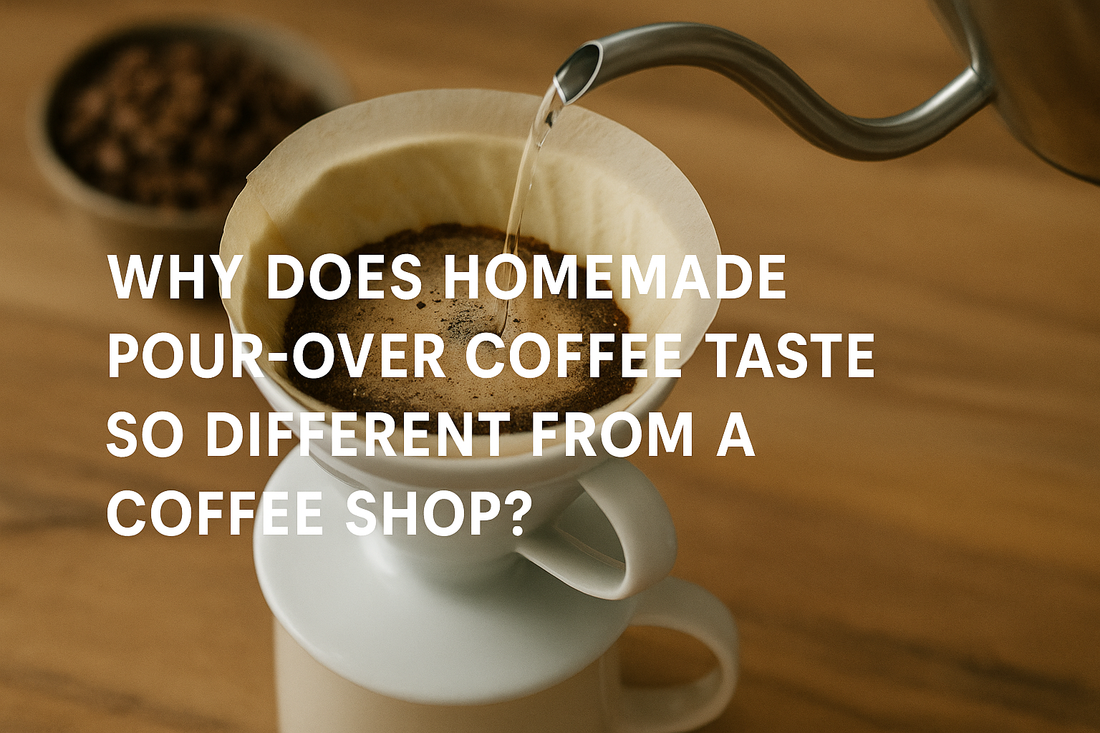
Why Does Homemade Pour-over Coffee Taste So Different from a Coffee Shop?
正啟 GLOBALEYESShare this news
An increasing number of small or local coffee shops have set high standards for "good coffee." After tasting an amazing cup at a café, many coffee lovers buy the same beans to brew at home, only to be disappointed by the drastically different taste. According to baristas and coffee shop owners, the main reasons for such discrepancy are:
- Inaccurate Measurements
- Inconsistent Grind Size
- Using Tap Water Instead of Filtered Water

Let’s explore each reason in detail:
1. Inaccurate Measurements
Precision is essential for achieving balanced coffee flavor.
- Too much coffee or too little water results in over-extraction, leading to bitterness.
- Too little coffee or too much water leads to under-extraction, causing sourness or lack of flavor.
Murilo Santos, founder and roaster at Boarding Pass Coffee in Alpharetta, Georgia, emphasizes the importance of accuracy. In professional coffee brewing, the metric system is standard due to its precision. He recommends using a scale rather than a spoon, as even the same spoonful can vary each time.

Recommended Ratios:
- Adam Kelley of Leopard Forest Coffee Company (South Carolina): 1:18 ratio (1 gram coffee to 18 grams water).
- Murilo Santos: Prefers 1:17 ratio.
- Kat McCarthy from Lavazza (New York): Suggests starting at 1:16 for drip coffee, then adjusting based on personal preference.

2. Poor Quality Coffee Grinder
According to Lindsey Sozio, founder of Lavender Coffee Boutique in Denver, the grinder’s quality significantly impacts coffee flavor—more so than the coffee maker itself. A quality grinder ensures consistently sized coffee grounds, crucial for even extraction.
- Amy Smith of EXO Coffee (Tucson, Arizona) strongly recommends using burr grinders over blade grinders.
- Burr grinders produce uniform particle size, ensuring balanced extraction and better flavor.
Adam Kelley also highlights that using the correct ratio and grind size contributes to the optimal extraction of soluble solids, balancing sweetness with acidity and bitterness.

3. Using Tap Water Instead of Filtered Water
Water comprises over 98% of coffee; thus, its quality significantly affects the taste.
- Tayler Jackson, lead barista at The Grind in Wytheville, Virginia, mentions that using unfiltered tap water severely impacts coffee flavor.
- Chlorine, minerals, old pipes, or accumulated scale in water adversely affect coffee taste, especially in cold-brew coffee.

Optimal Brewing Temperature:
- Recommended water temperature for drip coffee at home is between 195°F and 201°F (90°C to 93°C).
- Below 195°F (90°C): Results in under-extraction and sour coffee.
- Above 205°F (96°C): Causes over-extraction and bitter flavors.

Conclusion
To brew coffee at home comparable to a café’s quality, focus on these key areas:
- Precision in measurements (use a scale, follow recommended ratios).
- Use a high-quality burr grinder for uniform grind sizes.
- Brew with filtered water at optimal temperatures to enhance flavor clarity and prevent unwanted bitterness or sourness.

Mastering these three elements will greatly improve your home-brewed coffee, bringing you closer to that delightful café experience.
